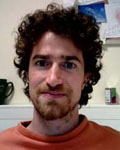Invited Talk by Umberto Castellani PhD (Department of Computer Science at University of Verona)

|
Umberto Castellani, PhD (Department of Computer Science at University of Verona) will be giving an invited talk on Tuesday, March 31, 11:00-12:00, in room MI 03.13.010
on
"Medical image classification: the cases of cancer area characterization and brains in Schizophrenia research"
|
Abstract:
In this talk we focus on two applications which exploit the effectiveness of machine learning techniques for medical image classification. The first application is focused on cancer area characterization. DCE-MRI images are analysed to asses tumor vasculature aiming at segmenting automatically tumor areas with different meaning, in a histological sense. The proposed approach is based on the effective combination of mean-shift clustering and Support Vector Machine classification. The second application is focused on brains classification among healthy (i.e., controls) subjects and subject affected by Schizophrenia (i.e., patients). The proposed method exploits local kernel to estimate brains similarities starting from unordered set of brain features.
Biography:
Umberto Castellani is Ricercatore (i.e., Research Assistant) of Department of Computer Science at University of Verona. He received his Dottorato di Ricerca (PhD) in Computer Science from the University of Verona in 2003 working on 3D data modelling and reconstruction. During his PhD, he had been Visiting Research Fellow at the Machine Vision Unit of the Edinburgh University, in 2001. In 2007 he has been an Invited Professor for two months at the LASMEA laboratory in Clermont-Ferrand, France. In 2008, he has been Visiting Researcher for two months at the PRIP laboratory of the Michigan State University (USA). His main research interests concern the processing of 3D data coming from different acquisition systems such as 3D models from 3D scanners, acoustic images for the vision in underwater environment, and MRI scans for biomedical applications. The addressed methodologies are focused on the the intersections among Machine Learning, Computer Vision and Computer Graphics.


